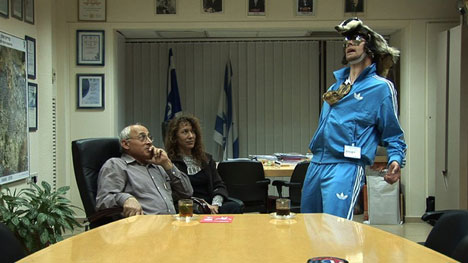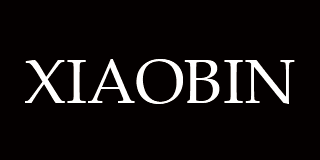Art Monthly 338
Jul-Aug 2010
Fiona Banner
Interviewed by Patricia Bickers
Literary Art
Mark Prince
Concerning the Spiritual
Dan Smith
Katie Paterson
Profile by Pryle Behrman
Buy Now – select:
Want to read this right now?
Get instant access to the entire back catalogue via Exact Editions from only £8.99!
Contents

Fiona Banner Harrier and Jaguar (detail) 2010
photo © Tate Photography
Interview
Tooth and Claw
Fiona Banner interviewed by Patricia Bickers
Fiona Banner's epic 'text landscapes' were first seen in the 1990s, reaching a peak with the telephone directory-size book, The Nam. Her move into sculpture continued her fascination with scale, language and film, particularly in relation to the paradoxes of military sensationalism. Here she discusses her major Tate Britain commission, recasting aircraft as bells and registering herself with an ISBN as a human publication.
'The planes themselves are built around a human scale, and the forms are naturally anthropomorphic. The Jaguar, stripped and polished, reveals itself to be luxurious and tactile, a fetishised object. Everyone wants to run their finger down its skin. One is adorned and one is stripped, but both planes are naked in a sense, separated from their function, grounded, nopayload. They are out of their element, and they have beeen placed in a critical space where questions will be asked of them.'

Frances Stark I must explain, specify, rationalize, classify, etc. 2007
Feature
The Art of Literary Art
Mark Prince on a clash of cultures
From Conceptual Art's use of technical vocabularies and Minimalism's engagement with concrete poetry, there has existed within art an engaged tension between the literary and the visual. Recently, artists have been returning to text, but does this collision between two cultures simply highlight their differences, or is it productive - or both?
'In recent art there is a more active concern with playing off art and literature against each other, and exploiting the resulting frictions.'

Marcus Coates The Plover's Wing (The Palestinian/Israeli Crisis) 2008
Feature
New Maps of Heaven
Dan Smith concerning the spiritual
Recently, artists have begun to utilise techniques culled from the worlds of spiritualism and religion, but have grounded these methods within everyday social and political realities. As a counter to the overblown spectacularism and religiosity of some 'biennale art', could this low-key approach offer a level of engagement that atheism and agnosticism cannot reach?
'I would like to assert here the value of engaging with enchantment as a counter to the genuinely disturbing turn to religiosity.'
Comment
Editorial
Cut and Come Again
Despite the talk beforehand about how it would be wrong to cut the relatively tiny arts budget in an attempt to plug the vast structural deficit, the new government's first move indicates that this is exactly what it plans to do.
'It was Ed Vaizey, the former shadow culture secretary during the last days of the previous government, who said: "We're not going to save the economy by cutting the arts - but you could damage the arts by cutting the arts." And he was right, but where is he now?'
Letters
Steve Klee takes issue with Dave Beech's interpretation of Jacques Rancière, and Beech replies.
Artnotes
The government targets the arts for cuts, the DCMS targets ACE, and ACE targets Arts & Business - of which the chancellor is a director; Boris Johnson finally installs Veronica Wadley as chair of ACE London, against howls of protest and charges of hypocritical cronysim; Zoo Art Fair succumbs; Aberdeen makes a bad decision on the proposals for a Centre for Visual Arts; Facebook closes down an art site after misclassifying it as a 'hate' project; Hirst aims for Kensignton Gardens and Gormley aims for Mayfair; galleries open and close; and all the latest news on art world appointments, events, commissions and more.
Submissions: Send Artnotes info to artnotes@artmonthly.co.uk
Obituary
Louise Bourgeois 1911-2010
Griselda Pollock

Katie Paterson As the World Turns (spring, summer, autumn, winter) 2010
Profile
Katie Paterson
Pryle Behrman profiles the London-based artist Katie Paterson
Katie Paterson has quickly gained a reputation for her technological investigations of the sublime. To coincide with her exhibitions in Whitstable, Gateshead and London, Pryle Berhman takes a closer look at work that work that often verges on the invisible.
'Katie Paterson's art enables us to engage with forces that are too intangible and too immense for us to experience in other ways: she has bounced music off the moon, mapped all 27,000 dead stars known to mankind and set up a phone line to eavesdrop on a melting glacier.'
Reviews
Exhibitions
Rude Britannia: British Comic Art
Tate Britain, London
Colin Perry
Exposed: Voyeurism, Surveillance and the Camera
Tate Modern, London
Christopher Townsend
Dead Fingers Talk: The Tape Experiments of William S Burroughs
IMT Gallery, London
Cherry Smyth
Mark Leckey and Martin McGeown: Life and Times of Milton Keynes Gallery
Milton Keynes Gallery
Martin Herbert
Berlin Biennale: What is Waiting Out There
various venues, Berlin
Chris Sharp
Whose map is it?
Iniva, London
Deborah Schultz
Chad McCail: Systemic
NGCA, Sunderland
Paul Usherwood
We Have The Mirrors, We Have The Plans
Mostyn, Llandudno
David Trigg
David Nash
Yorkshire Sculpture Park Wakefield
Bob Dickinson
Reviews
Artists' Books
Summer Round-Up
Stephen Bury on the latest crop of artist's book works
'Monica Haller's Riley and his story starts before it begins: on its front cover it asserts (in green type) "this is not a book". Its 471 pages belie this ...'
Reviews
Books
Summer Reading
David Barrett picks some holiday reading
'While Mute's examination of the dematerialisation of goods and the rise of fictitious capital proved immensely prescient, if financial theory is too abstract for you there is always the section on urban regeneration and the privatisation of public space, of which Benedict Seymour and David Panos's "Fear Death by Water: The Regeneration Siege in Central Hackney" is a cracking example, acidly recounting the police siege that effectively cleared an area marked for gentrification.'
Reviews
Film
Apichatpong Weerasethakul
Coline Milliard on the Thai director's BFI exhibition
'Apichatpong Weerasethakul's short film Phantoms of Nabua, 2009, opens with a tropical thunderstorm. Blinding flashes of lightning strike the ground, a crackling neon strip flickers in the heavy rain. As the camera moves backwards, it gradually reveals a freestanding screen; the monsoon turns out to be a cinematic back-projection.'
Report
Miami
Letter from Miami
Michael Wilson on the US party capital's off-season gallery scene
'In town to oversee the installation of 'How to Read a Book', an exhibition I curated for established not-for-profit gallery Locust Projects (one of precious few such institutions in the American South-East), I was able to observe Miami's creative community during a period when international art fair attention was focused elsewhere.'
Report
Mexico City
Letter from Mexico City
Kathy Battista on art in the Mexican capital
'Mexico City, worlds away both physically and culturally from the border towns, hosts a plethora of activity in the visual arts and is arguably the site of some of the most exciting art production in North America. Much of this practice is inspired by the city itself and its strong modernist roots, which lend abundant subject matter to both emerging and established artists.'
Report
Conference
The Falmouth Convention
Coline Milliard on the pre-Manifesta event
'The idea for The Falmouth Convention came out of discussions about Cornwall's possible hosting of Manifesta in 2014. But by the time it opened in Falmouth last May, the convention's organisers had taken a purposeful stride beyond this initial impulse. Rather than acting as a rehearsal for a Manifesta "coffee break", TFC established itself as a stand-alone endeavour looking in turn at theoretical propositions around "place", experiences of local engagement and the specifics of the Cornish context.'
Salerooms
New York
Safety First
Colin Gleadell on the blue-chip American market
'Generally speaking, the speculators are still out of the market and demand for younger, more prolific artists is patchy. However, there is a pent-up supply of works for sale, waiting for prices to go up again, and the level of supply was the highest for over a year.'
Artlaw
Ways of Working
Collective Bargaining
Henry Lydiate on how artists can band together in collectives
'Last month's column focused on the selling power of those few artists whose works have established a strong market value, and their ability to pick and choose - or blacklist - their purchasers or dealers. To redress the balance, this month's column considers the situation of the vast majority of artists who have little or no individual bargaining power.'
Listings
Exhibitions
Exhibition listings
Art Monthly's exhibition listings can also be viewed online.










